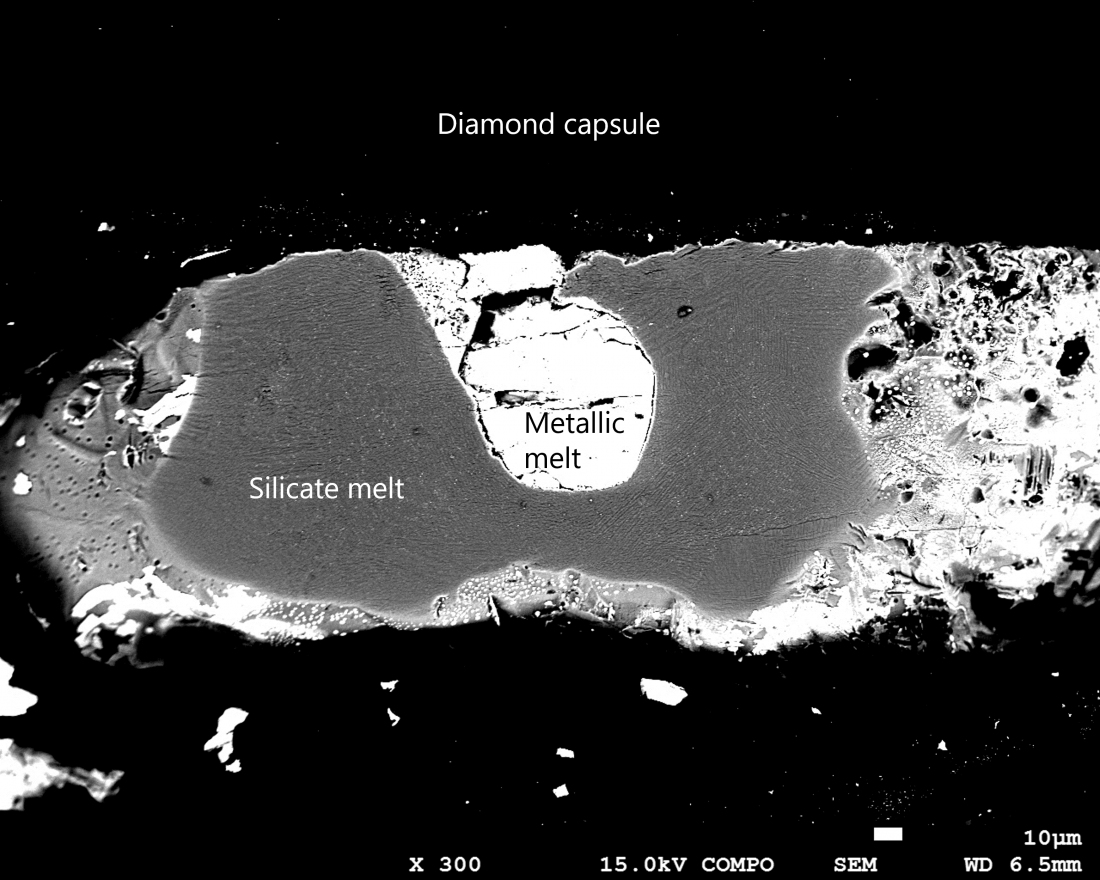The bright area at the center of the image shows quenched metallic melt and the surrounding grey area indicates quenched silicate melt. The sample was encapsulated into a graphite capsule, which is transformed into diamond during heating experiments.
Elucidating the atmosphere and surface environment of the early Earth, especially before the origin of life, is a key to understanding the habitability of the Earth. The atmosphere of terrestrial planets has been thought to be formed by degassing volatiles from the interior and its composition is mainly controlled by the oxidation state of the mantle. To understand the mantle oxidation state, the abundance of ferrous (Fe2+) and ferric (Fe3+) iron in the mantle are key because the mantle oxidation state varies with the relative abundance of these two iron oxides.
Ehime University has led an experimental study showing that the formation efficiency of Fe3+ via redox disproportionation of Fe2+ in metal-saturated magma under high pressures corresponding to the depth of the lower mantle is higher than previously thought. In this reaction, Fe3+ and metallic iron (Fe0) are formed from 2Fe2+, and the segregation of Fe0 into the core increases the content of Fe3+ in the residual magma and its oxidation state. The experimental results indicate that the Fe3+ content of the Earth’s magma ocean during core formation was about one order of magnitude higher than the present upper mantle. This suggests that the magma ocean was much more oxidizing than the present Earth’s mantle after the core formation, and the atmosphere formed by the degassing of volatiles from such a highly oxidizing magma would have been rich in CO2 and SO2. In addition, the authors found that the estimated oxidation state of the Earth’s magma ocean can explain that of Hadean magmas of more than 4 billion years ago by inference from geological records. Because the formation efficiency of biomolecules in a CO2-rich atmosphere is quite low, the authors speculated that the late accretion of reducing materials after the formation of the Earth played an important role in supplying biologically available organic molecules and the formation of a habitable environment.



